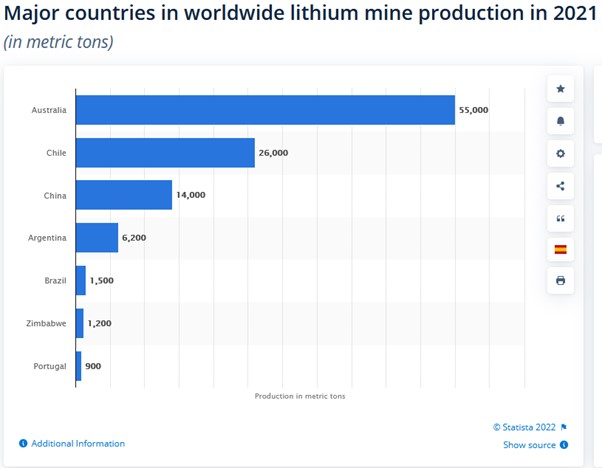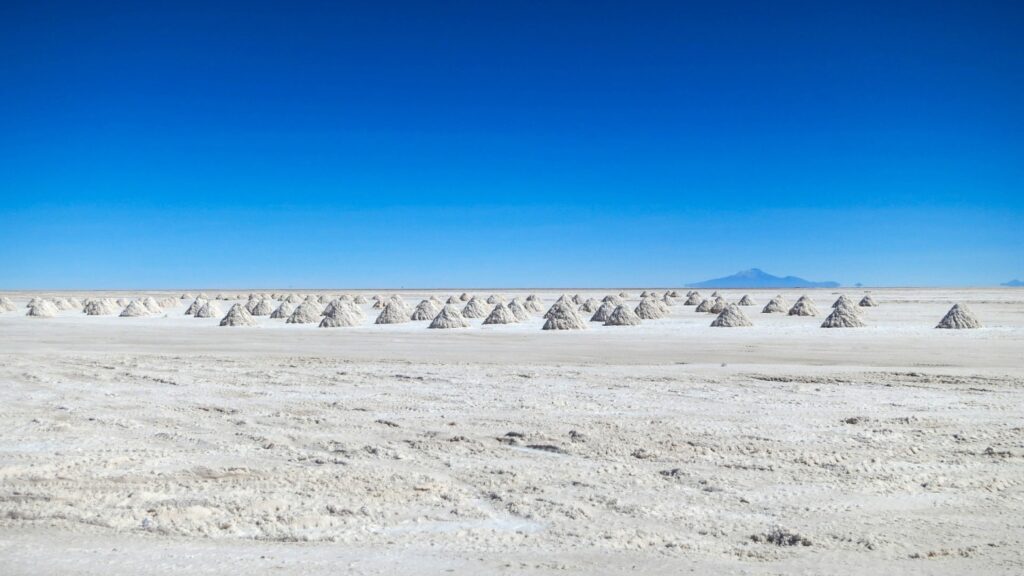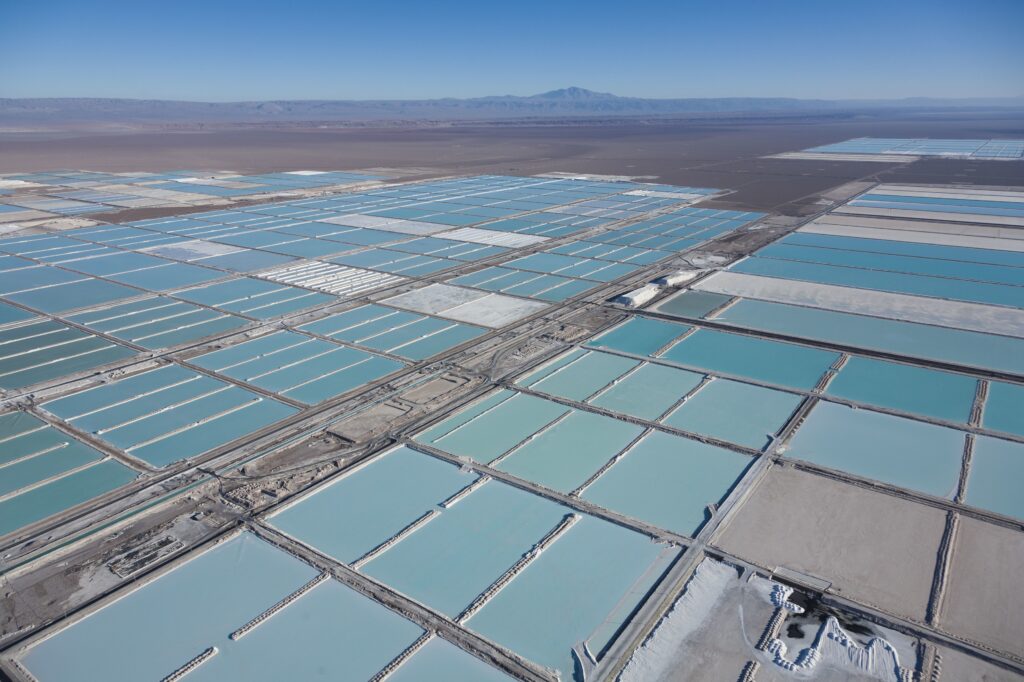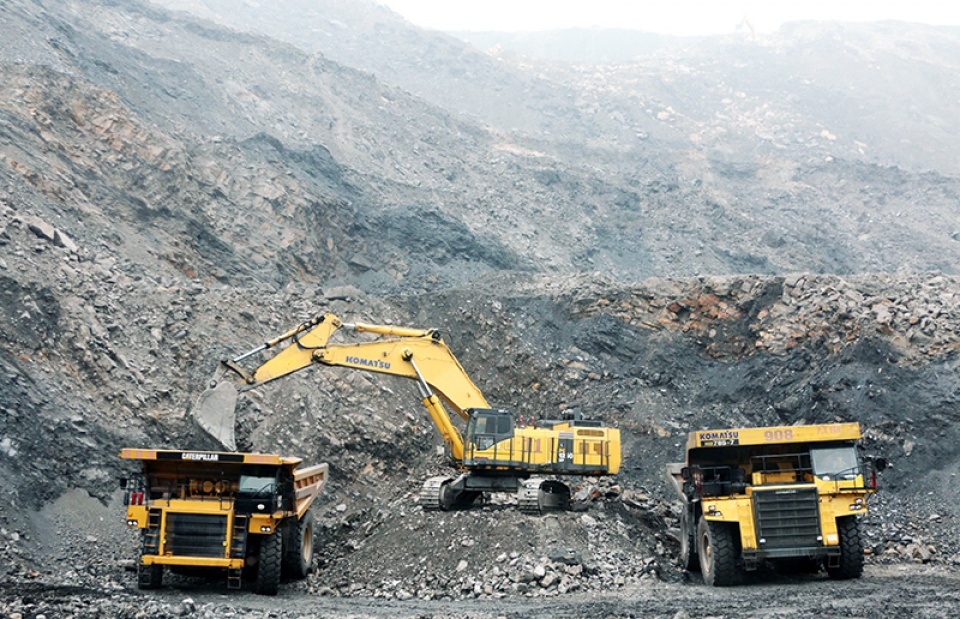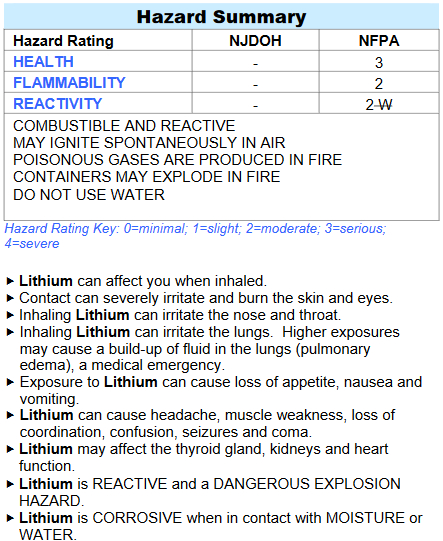There is about 8 kg of lithium used in the average electric car battery. According to McKinsey lithium demand will rise from approximately 500,000 metric tons of lithium carbonate equivalent (LCE) in 2021 to some three million to four million metric tons in 2030. That is a six or eight-fold increase in a decade.
Mining
How is Lithium mined? There are two methods. Put simply, lithium from Australia comes from ore mining, while in Chile and Argentina lithium comes from salt deserts, so-called salars.
The extraction of raw materials from salars functions as follows: lithium-containing saltwater from underground lakes is brought to the surface and evaporates in large basins. The remaining saline solution is further processed in several stages until the lithium is suitable for use in batteries.
The problems are different depending on the extraction method. The first process has often involved displacing thousands of acres of dirt and rock (known as overburden material), disrupting nearby land and eradicating plant life. The second process may consume huge quantities of fresh water — often sourced from wells, streams or aquifers that are also used for farming or drinking water, itself a precious resource in the arid regions where lithium deposits are found.
Approximately 500,000 gallons are used to produce one tonne of lithium. In Chile’s Salar de Atacama, mining activities consume 65% of the area’s water. In a region where annual rainfall is less than 15 millimetres per year, the activity depletes already scarce water resources that local communities and species depend on.
Source: Dialogo Chino – December 2020
The exploitation of these areas has resulted in dozens of legal actions from the indigenous population. One common complaint is that their existing lifestyles are being taken away, they are offered new jobs in mining, but will have no arable land once the extraction is complete. Even now they are being pressured to give up water rights in return for jobs in lithium mining.
USA
Recently America is looking to exploit lithium reserves. Trump issued a number of licenses towards the end of his term and exploration is underway. There is however strong resistance to mining. For example, in Nevada one mine in a cattle area is estimated to use 3,244 gallons per minute. According to a Lithium Americas consultant, this will cause the water table to drop by 12 feet. The mine will cause groundwater contamination with metals including antimony and arsenic according to Federal Authorities.
The following is from Econews.green:
Any type of resource extraction is harmful to the planet. This is because removing these raw materials can result in soil degradation, water shortages, biodiversity loss, damage to ecosystem functions and an increase in global warming.
But when we think of extraction, we think of fossil fuels like coal and gas. Unfortunately, lithium also falls under the same umbrella, despite paving the way for an electric future. Lithium can be described as the non-renewable mineral that makes renewable energy possible – often touted as the next oil.
Refining
As mentioned, there are two types of extraction. The salt desert mined and the underground mined Lithium
Salars
In order to extract lithium from brines, the salt-rich waters must first be pumped to the surface into a series of large evaporation ponds where solar evaporation occurs over a number of months.
Potassium is often first harvested from early ponds, while later ponds have increasingly high concentrations of lithium. Economical lithium-source brines normally contain anywhere from a few hundred parts per million (ppm) of lithium to upwards of 7,000 ppm.
Chile, Antofagasta region, San Pedro de Atacama, Atacama salar, the world’s largest lithium deposit, evaporation ponds of the Sociedad Quimica Mineral de Chile lithium mine or SQM and Sociedad Chilena del Litio or SCL (aerial view)
When the lithium chloride in the evaporation ponds reaches an optimum concentration, the solution is pumped to a recovery plant where extraction and filtering remove any unwanted boron or magnesium. It is then treated with sodium carbonate (soda ash), thereby precipitating lithium carbonate. The lithium carbonate is then filtered and dried. Excess residual brines are pumped back into the salar.
Lithium carbonate is a stable white powder that is a key intermediary in the lithium market because it can be converted into specific industrial salts and chemicals—or processed into pure lithium metal.
Mined lithium
The process for mined lithium is different. Because of the amount of energy consumption and materials required, lithium production from mining is a much more costly process than brine extraction, even though these minerals have a higher lithium content than the saltwater.
Of the five minerals, spodumene is the most commonly used for lithium production. After it is mined, spodumene is heated to 2012 degrees Fahrenheit and then cooled to 149 degrees. It’s then crushed and roasted again, this time with concentrated sulfuric acid. Ultimately, sodium carbonate, or soda ash, is added, and the resulting lithium carbonate is crystallized, heated, filtered, and dried. The process is highly energy intensive.
Health Risks
According to the New Jersey Health Department, these are the issues with lithium.
How many fires have been caused by lithium batteries? If they’ve been damaged or have some kind of defect, they can cause devastating fires. The U.S. Consumer Product Safety Commission reported that there were more than 25,000 issues involving fires or overheating stemming from lithium-ion batteries in a five-year period.
You might remember the aircraft some years ago that had a hole blown in the fuselage when a battery caught fire. There are many reported cases of phones catching fire – some on aircraft. Many airlines (including Qantas) will not carry lithium-ion batteries as cargo.
Summary
Lithium is forecast to grow six or eightfold in the next eight years. Mining currently causes issues and particularly so in those countries using salars. The depletion of existing water resources and the impact on indigenous peoples is almost existential. The lands may never support the lifestyles before mining. In fact, the lands may become uninhabitable. Mined lithium is also a blight on the landscape and will leave many areas unable to be uninhabited much less be able to return to pre-mining days.
Greed drives development in many countries (should that be most countries?) and the resources in the USA are up for grabs. There is a fortune to be made by those able to crash through the regulations. Much of the land now used for agriculture are ripe to be exploited. Trump set the ball rolling and there may be no way to stop it.
